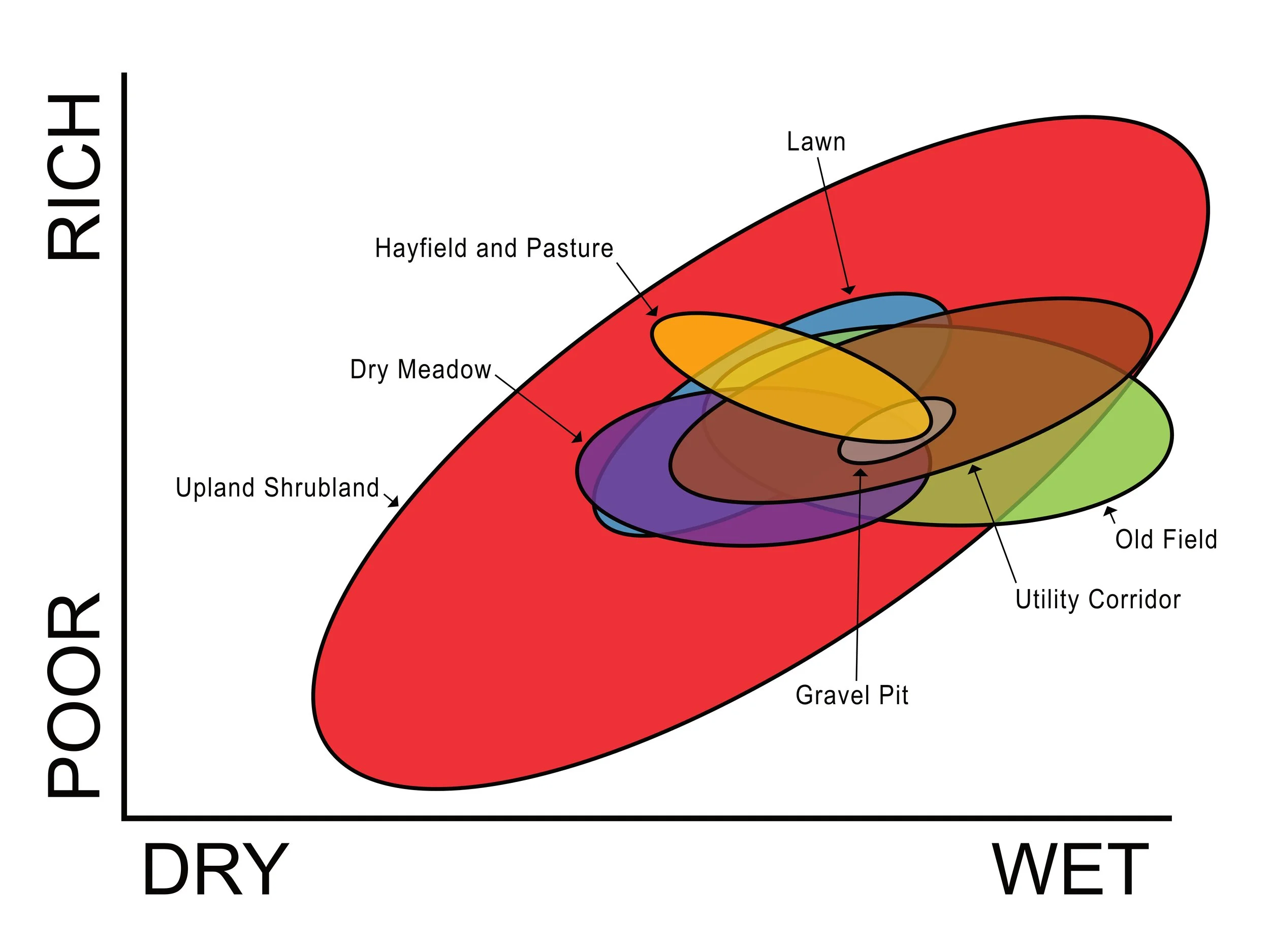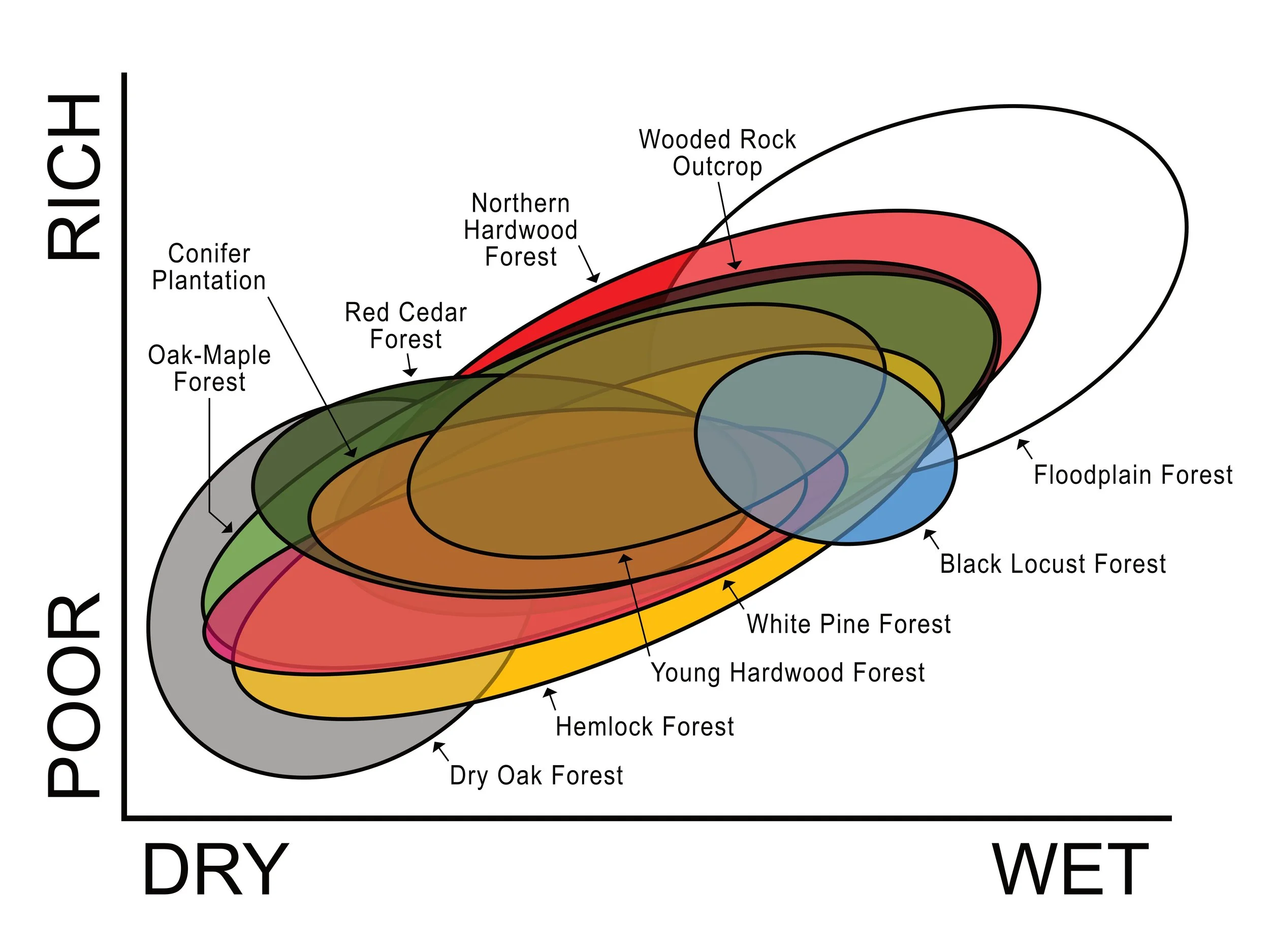From the Hudson to the Taconics: An Ecological and Cultural Field Guide to the Habitats of Columbia County, New York
Written by Anna Duhon, Claudia Knab-Vispo, Gretchen Stevens, and Conrad Vispo – Hawthorne Valley Farmscape Ecology Program, Hudsonia Ltd.
This extraordinary image-filled book will fascinate and inform anyone interested in the natural and cultural landscape of the northeastern United States.
That is reason enough for my strong recommendation that you read this book, and it explains my review of a guide that focuses on a single county in New York state. So much of the knowledge transfers well beyond the boundaries of this small area. If you live in the Northeast you will learn more from this book about understanding and interpreting your own landscape than you will from any handful of books specifically focused on it.
What makes this guide so compelling and insightful? The authors and their integrated approach to exploring, interpreting, and explaining nature; the volume’s ingenious and informative layout and graphics; the engaging images of every plant, bird, insect, reptile, and amphibian that one might expect to encounter across much of the Northeast; and the even-handed considerations that are shared on respecting, stewarding, and conserving the land.
From left to right: Conrad Vispo, Claudia Knab-Vispo, Anna Duhon, and Gretchen Stevens. Photo courtesy of Hawthorne Valley Farmscape Ecology Program
There are also the special and unanticipated touches. The treatment of ignored habitats—lawns, gravel pits, utility corridors, beaver ponds, old fields, and red cedar forests. Deep engagement with people that colors each habitat description with sections on perceptions, places to visit, special places, and children’s special places. The integral role of history that permeates the volume and informs an understanding of the dynamics of each habitat, underscores the important distinction between “ancient” and “secondary” woods, and allows recognition of transient habitats that will decline with time and ghost habitats that have already disappeared. Most importantly, the deep connection of the authors to this cultural landscape conveyed through their use of terms like “intimacy,” “informed reverence,” “deep relationships,” and “human connections.” This is a book by brilliant but humble scholars of the land and life.
Leatherwood is a rare spring-flowering shrub sometimes found in the northern hardwood forest. Photo courtesy of Hawthorne Valley Farmscape Ecology Program
“After years of studying ecology, the authors of this book are more rather than less, humbled by the limits of scientific knowledge”
“It would not be incorrect to say that, overall, humans have been poor stewards of this land over the last centuries”
“‘Hallowed Ground’ refers to land that is sacred or revered by a particular group of people. While it is not for us as authors to declare land ‘hallowed,’ we can effectively do so as a community if we each grow to know and love the land and incorporate it into our own varied lives. This Field Guide is our effort to help make Columbia County hallowed ground—not to the exclusion of other lands, but rather in the belief that all lands should be hallowed to those living upon them.”
– From the book
Anna Duhon is a committed community-based social scientist; Claudia Knab-Vispo and Gretchen Stevens are accomplished field botanists who bring insights developed through considerable regional and international experience; and Conrad Vispo is an eclectic wildlife ecologist with an extraordinary passion for landscape history. Conrad’s thoughtful piece Agroecology as Faith: Thoughts on Farming With and For Nature provided readers of this magazine with an introduction to the unusually integrated approach to farming and nature by the Hawthorne Valley Farmscape Ecology Program, which produced this volume in collaboration with Hudsonia, a center for field science.
The estimated number of farms in Columbia County since 1790 (left axis) together with the estimated human population and tens of forested acres (right axis). The nineteenth century saw a sustained expansion in agriculture coupled with an initial population boom and extensive deforestation. A distinctive aspect of this book is the way in which this history is melded into and reflected on in every section. The dynamic and sometimes transient qualities of nature appear through the appreciation for ancient forests, ghost habitats, and landscape and societal change. Image courtesy of Hawthorne Valley Farmscape Ecology Program
Hemlocks are cut and stripped of their bark in this image from the Biography of Zadock Pratt of Prattsville, N.Y. by Nathan Capan, likely published in 1852. The bark was then sold to tanneries to make leather goods. Photo/Image courtesy of Hawthorne Valley Farmscape Ecology Program
There are at least three levels at which I expect to continue reading this book over the years. The first is to appreciate its comprehensive approach to interpreting and situating landscapes. The opening of the book provides an informative introduction to the approach that these authors took in the two decades that they spent exploring their natural and cultural worlds while assembling this volume. Following that, and through a melding of history, ecology, and cultural understanding, each of the approximately eight-page habitat descriptions provides several sections: First Glimpse, Location, and Visiting accompanied by maps; What to Look For, Similar Habitats, and Variation Within the Habitat along with photos and descriptions of characteristic plants; and Stewardship, History, Perspectives, and Interact, which encourage exploration and further insights.
My second level of appreciation comes by simply thumbing through the book, choosing habitats to explore while improving my understanding of the characteristics and species of oak, hemlock, and northern hardwood forests or learning new butterflies of upland shrublands, dry meadows, cropland, or old fields. Over the past nine months I have regularly reached for one of my two copies of the guide when sitting in front of my woodstove on Martha’s Vineyard or while resting after a long hike on our cabin porch in northern Vermont. Finally, I love to explore the maps and “Dashboards” that accompany each of the habitat descriptions and puzzle through, interpret, and begin to assemble in my mind how the habitats come together to form larger landscapes and the region.
The native eastern cucurbit bee (also referred to locally as “squash bee”) specializes on flowers of pumpkins, squashes, cucumbers, and melons, and is more effective than the non-native honey bee at pollinating these plants. Photo courtesy of Hawthorne Valley Farmscape Ecology Program
Ultimately, it is the creativity and knowledge of the authors that make From Hudson to the Taconics compelling. Conrad Vispo, Claudia Knab-Vispo, Anna Duhon, and Gretchen Stevens comprise an extraordinary team.
Locust borer is a beetle in a wasp’s colors. It is often seen on flowers of goldenrods, but its larvae feed on the wood of black locust. Photo courtesy of Hawthorne Valley Farmscape Ecology Program
To my knowledge, I’ve never been to Columbia County, but I’ve traveled across much of New England entertaining my passion for interpreting the patterns and processes that shape the land. I continue to engage that interest and improve my skill at that pastime each minute I spend with this book.
The “botanical portrait” of a hemlock forest was created by Jill Jakimetz using material collected by participants in the habitat outing to a hemlock forest. The assignment was to collect items that best captured each person’s experience of the habitat. Photo courtesy of Hawthorne Valley Farmscape Ecology Program
To learn more, visit the Hawthorne Valley Farmscape Ecology Program and Hudsonia, the two organizations responsible for this fabulous book and many impactful programs.
To purchase, visit Black Dome Press.
Recommended by David Foster
David Foster is an ecologist, Director Emeritus of the Harvard Forest, and President Emeritus of the Highstead Foundation. He co-founded the Wildlands and Woodlands Initiative in 2005 and was lead writer of Wildlands in New England: Past, Present, and Future in 2023. David has written and edited books including Thoreau’s Country: Journey Through a Transformed Landscape; Forests in Time: The Environmental Consequences of 1,000 Years of Change in New England; Hemlock: A Forest Giant on the Edge; and A Meeting of Land and Sea: The Nature and Future of Martha’s Vineyard.











